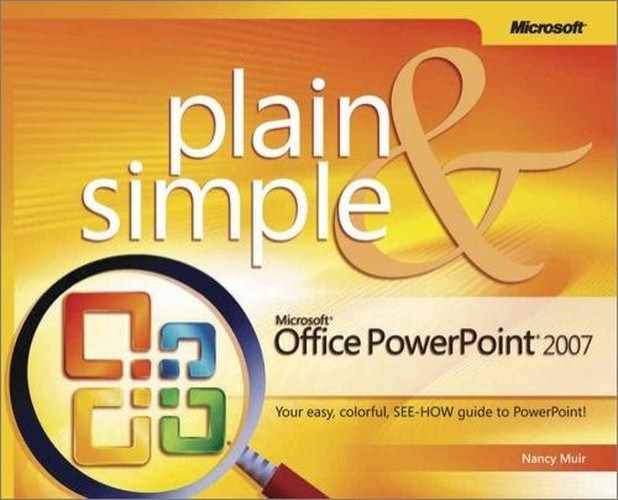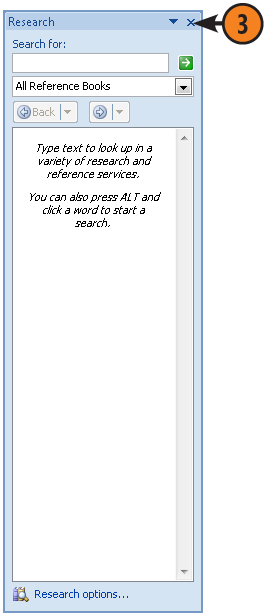The ribbon is your control central in PowerPoint 2007. The default ribbon consists of seven tabs, although contextual tabs may appear now and then when working with certain types of objects or functions. An eighth tab, Add-Ins, appears if you install third-party programs and features such as Microsoft PowerPoint Presenter Tools, or a tool like the one I used to capture the screens for this book.
Try This!
You can open dialog boxes associated with groups of tools by clicking the Dialog Box Launcher, a small arrow on the bottom right corner of many groups on the ribbon. This displays additional settings and features related to the ribbon functions.
Tip
The Add-Ins tab is where you can add programs or features that are not part of PowerPoint. You include add-in programs here using the PowerPoint Options in the File menu. For example, there are additional presenter tools or presentation notes tools you can include as add-ins.
Tip
Can’t find a tool? Some tools, such as Preview as a Web Page, are not on the ribbon. In that case, you have to add the tools to the Quick Access toolbar to perform the function. See the task Customize the Quick Access Toolbar later in this section for more about how to do this. There is also a helpful listing in PowerPoint Help that tells you how to find the tools you knew in PowerPoint 2003 in their new locations in PowerPoint 2007.
 Click the ScreenTip Style drop-down arrow and choose one of the settings:
Click the ScreenTip Style drop-down arrow and choose one of the settings:Show Feature Descriptions In ScreenTips displays larger ScreenTips with the tool button name and an explanation of its function.
Don’t Show Feature Descriptions In ScreenTips displays only the tool button name.
Don’t Show ScreenTips displays neither enhanced nor standard ScreenTips.
 Hover your mouse over a button on the ribbon and the appropriate setting takes effect (this shows the Show Feature Descriptions In ScreenTips setting).
Hover your mouse over a button on the ribbon and the appropriate setting takes effect (this shows the Show Feature Descriptions In ScreenTips setting).
Tip
When you display either type of ScreenTip, keystroke shortcuts for tool button functions are also displayed, when they exist. So, for example, if you hover your mouse over the Paste button, you will see (Ctrl+V) in parentheses after the tool name in the ScreenTip. You can use this keystroke combination to perform a paste rather than clicking the button, if you wish.





